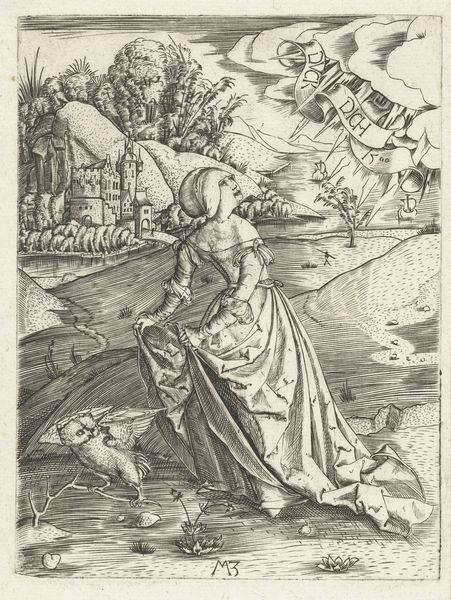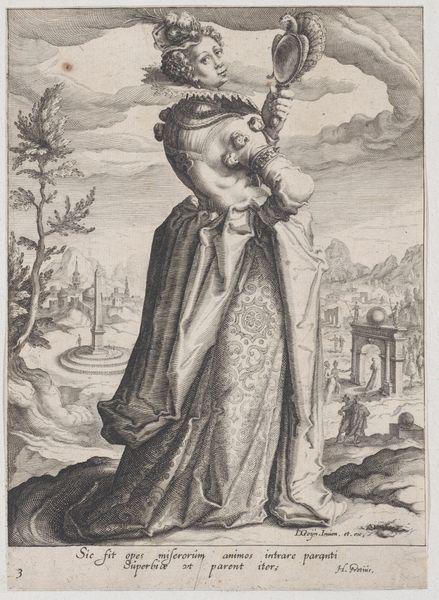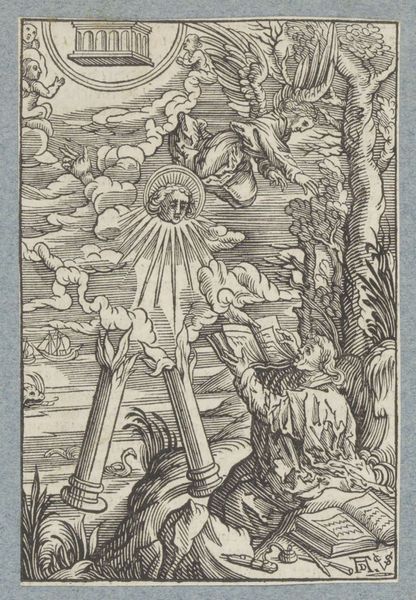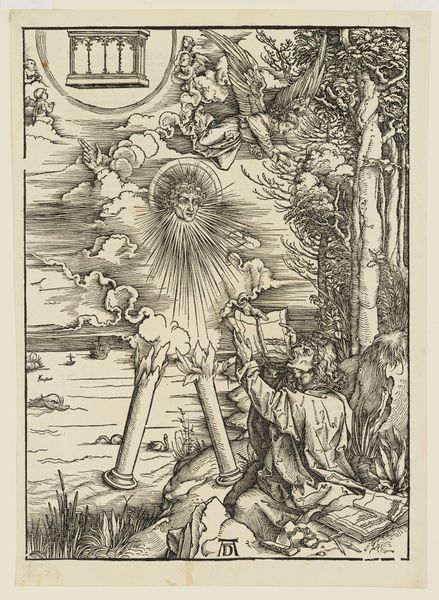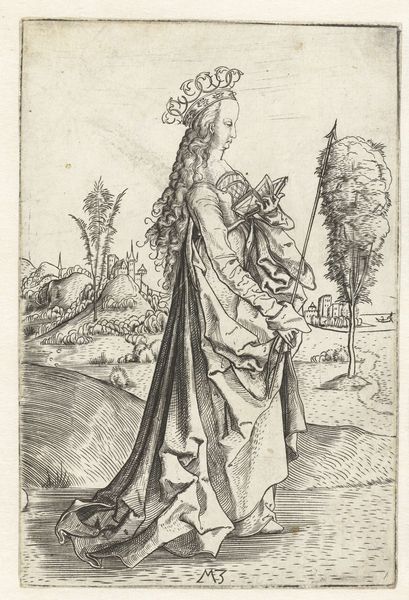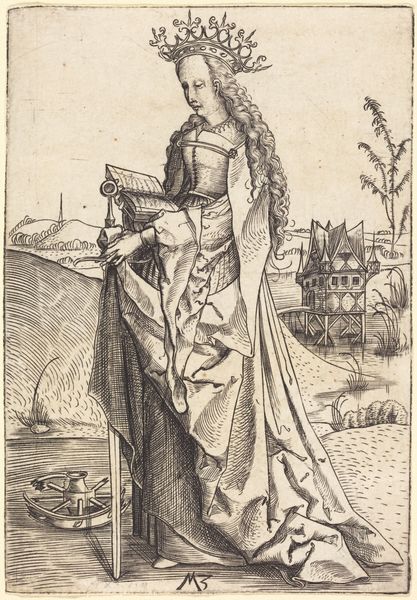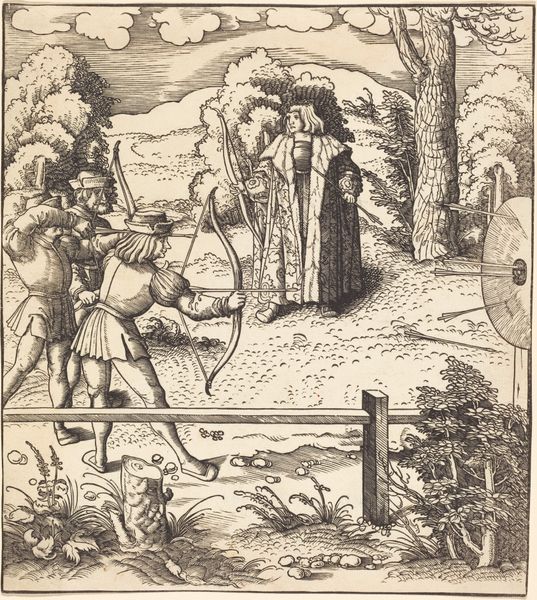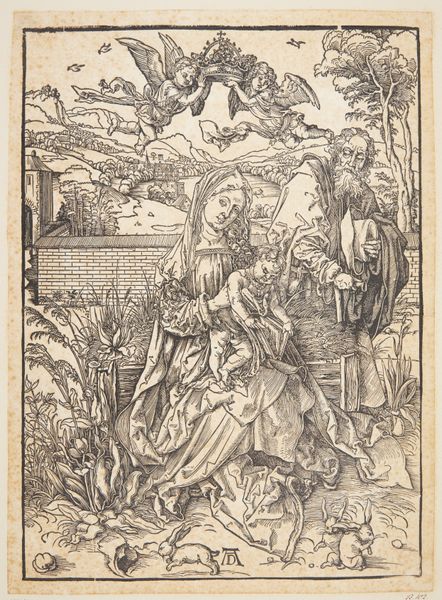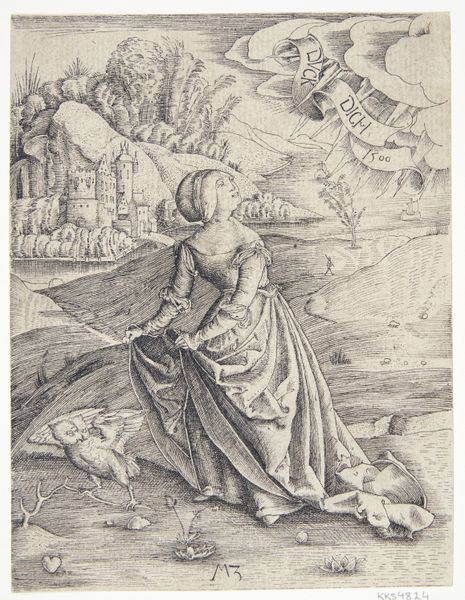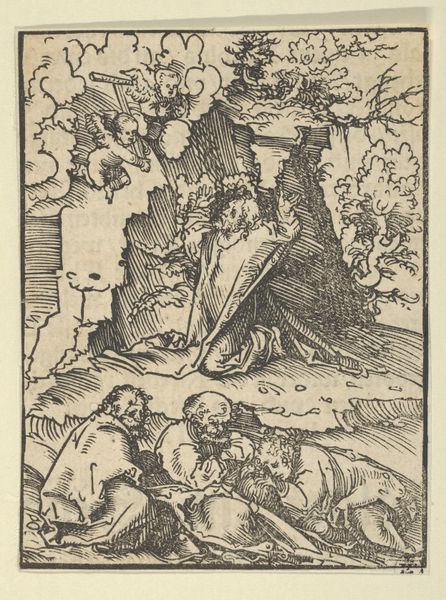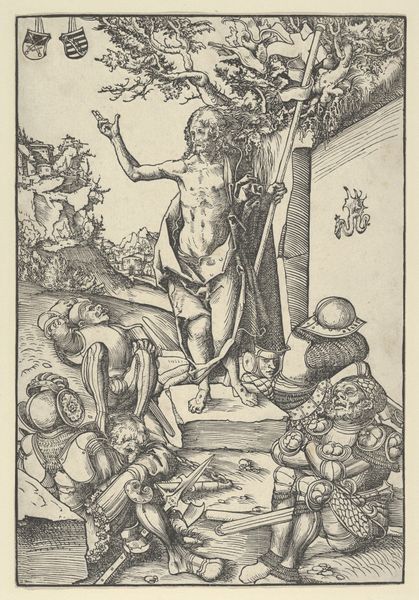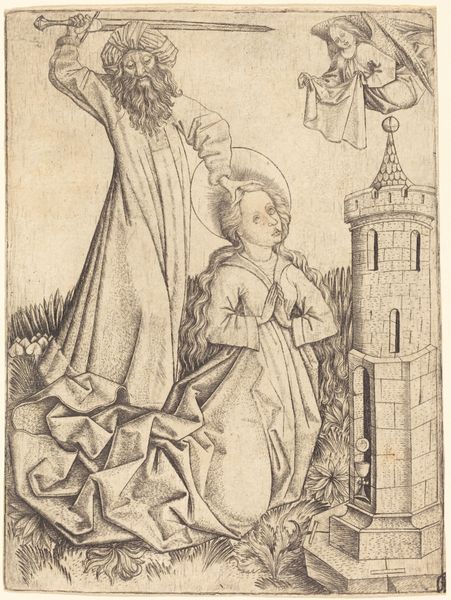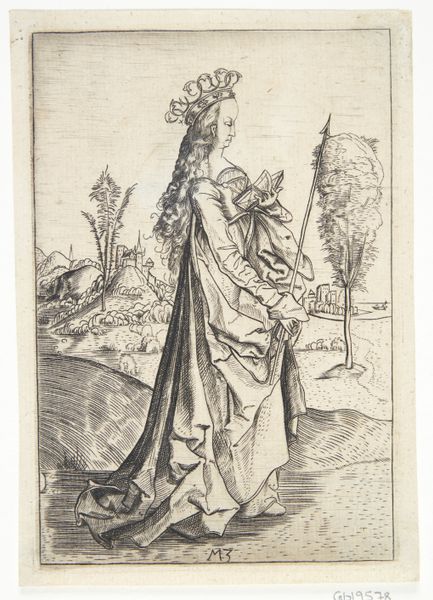
print, woodcut
#
pen drawing
# print
#
landscape
#
figuration
#
woodcut
#
line
#
northern-renaissance
Copyright: National Gallery of Art: CC0 1.0
Editor: Here we have Leonhard Beck’s “Saint Goery,” created around 1516-1518. It’s a print, seemingly a woodcut. It’s really striking with its intense detail. What are your first thoughts when you see this work? Curator: I immediately consider the material conditions that shaped this image. Woodcut printing demanded a specific skill set. The labor involved in carving the block itself, and then the subsequent reproduction of the image for distribution. Did Beck carve this block himself, or was it the result of a collaborative workshop? How was the consumption of such images organised in early 16th century Bavaria? Editor: That's a very interesting point about the division of labor! I hadn't considered that. The clean lines make me wonder if one person could have executed this intricate block, it seems an unbelievable accomplishment. Curator: Exactly. And we also must consider the economics of image production. What markets were these prints designed for? Were they luxury items, or meant for mass consumption? Think about the context in which "Saint Goery" was produced. Was it tied to a local cult of the saint, influencing local patronage? Editor: So it’s less about the artistic genius and more about how materials, production, and economic factors play? Curator: Not necessarily ‘less about.’ But consider what stories these very material qualities tell us. For instance, the use of woodcut implies accessibility – compared to, say, an illuminated manuscript. The linear style speaks to the demands of the medium itself and we can thus understand it as an indication of cost effectiveness and speed of production for mass circulation. How does this knowledge re-shape the images devotional power? Editor: I see, by understanding the constraints and choices made in production, we see the work in its historical reality, rather than just as an isolated art object. That totally shifts how I look at it. Thank you. Curator: Precisely! And, through understanding its place within the history of material and consumption we are also afforded the ability to speculate as to the lives and status of those who made and came to posses this Saint. A fruitful journey, indeed!
Comments
No comments
Be the first to comment and join the conversation on the ultimate creative platform.
